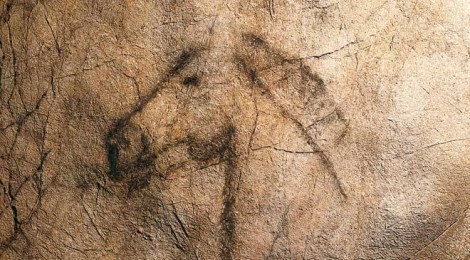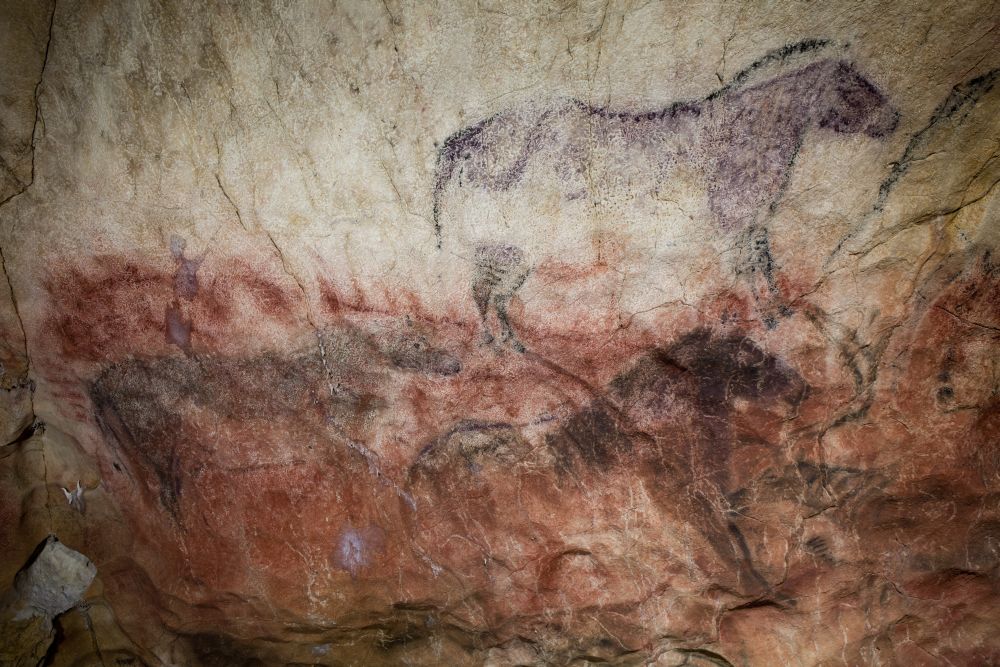
The Peak is Underground: Cave Paintings of Tito Bustillo
Pinnacles of experience don’t find words easily. But I will try. I must try.
Let’s go together.
Enter the cave. There are three doors, one after another. Quieter and darker behind each.
Yes, we have a guide, but our Spanish is not good enough to follow his hushed patter, and so we are in a kind of sensory deprivation chamber.
A kilometer from the entrance, all we have is the sound of human feet and the occasional drip of stalactite reaching out for stalagmite.
We are now 25,000 years underground. Before Christ. Before Rome. Before Buddha. Before Sumeria. Before writing. Before agriculture.
But not before people.
There were people. Here.
Not just sheltering themselves near the cave’s original opening. No, deep inside. With torchlight. And paint. Paint they made.
Because they had something to say.
Our guide bids us to stop. Three dim lights shine on the floor of the cave. We see a long ochre patch on the wall. The light is too faint for detail.
He adjusts his little yellow flashlight. He begins to trace it along the wall.
What he says does not matter. Because art is universal.
Here is the leg of a horse. Here its back. Here its mane. And now its regal head.
People drew here for 15,000 years, layering drawing on drawing on drawing.
They didn’t draw themselves. They drew animals.
Here is the reindeer horn. Here its eye and muzzle.
We understand his Spanish because what is painted is universal.
So clear. So beautiful.
These artists used natural shapes in the rock to give their drawings a sculptural, three-dimensional quality.
Sophisticated. Composed.
Our guide stops tracing. A second flashlight appears.
And then the entire wall expands. From the wash of white light he has brought along.
Twenty people gasp. And then there is only the drip, drip, drip of stalactite reaching out for stalagmite.
Because the color is achingly beautiful.
Purple. Black. Ochre. Red.
Striking. Deliberate.

A fraction of largest panel of the Tito Bustillo painting under white light. Who knows what colors didn’t last for 15,000 years?
The last artists painted here 600 generations ago.
Profound talent was here before us. Before writing. Before agriculture.
But not before paints and brushes and torches and scaffolding.
Yes. They built. Here. Wooden scaffolds. So they could paint higher on the wall than their ancestors.
A person like Michelangelo was here before us. A person like Diego Rivera.
Not a primitive person. Just a person. With primitive tools.
A person. People. People with something to say.
They loved animals.
It hurts to leave. It always hurts to leave great art.
But we must.
We must retrace our steps. We must pass through the echoing drip, drip, drip. And close the three doors behind us.
The light raises our hearts. Across a tiny immensity of time—What is 15,000 years to the universe?—humans have blazed beauty into each other’s eyes.
We will walk through the rain giddy.
Let us buy an aged wine and raise a glass in honor of the greatness of these artists.
Who mastered the language that needs no syntax.
Recommending you see truly ancient, beautiful imagery before you die,
Chris
We cannot take pictures inside the cave, so this article relies on graphics taken by official photographers. The images came from these web sites.
Reindeer: http://www.imagesource.com/Doc/IS0/Media/TR3_WATERMARKED/6/6/c/5/IS0997W5S.jpg
Main panel with purple horse on top: http://www.spainisculture.com/en/monumentos/asturias/cueva_del_tito_bustillo.html

Recent Comments